Introducing Other Accidents- Product Liability- Substantial Similarity - Accident Lawyer Hawaii

|

|

|

|
Product Liability Lawyer - Accident Attorney Hawaii
Law Office of William H. Lawson |
|
Defective Products - Table of Contents Introducing Other Accidents - "Substantial Similarity"Products Liability Cases In HawaiiA "showing of substantial similarity is required when a plaintiff attempts to introduce evidence of other accidents as direct proof of negligence, a design defect, or notice of the defect." Cooper v. Firestone Tire & Rubber Co., 945 F.2d 1103, 1105 (9th Cir.1991). Minor or immaterial dissimilarity does not prevent admissibility. Western Recreational Vehicles, Inc. v. Swift Adhesives, Inc., 23 F.3d 1547, 1555 (9th Cir.1994). Evidence of similar accidents is admissible to refute a defense witness' testimony that a given product's design is safe. Cir. 1986), Rexrode v. American Laundry Press co., 674 F.2d 826 (10th Cir. 1982). Under federal law, it is clear that evidence of the occurrence of other accidents involving substantially similar circumstances is admissible, pursuant to a strict liability theory to refute testimony by a defense witness that a given product was designed without safety hazards. McKinnon v. Skil Corp., 638 F.2d 270, 277 (1st Cir. 1981); Wojciechowski v. Long-Airdox Div. of Marmon Group, Inc., 488 F.2d 1111, 1116 (3d Cir. 1973); Jones & Laughlin Steel Corp. v. Matherne, 348 F.2d 394, 401 (5th Cir. 1965); Prashker v. Beech Aircraft Corp., 258 F.2d 602, 608 (3d Cir.), cert. denied, 358 U.S. 910 (1958). As stated in Pau v. Yosemite Park and Curry Co., 928 F.2d 880 (9th Cir. 1991), appeal after remand, 39 F.3d 1187 (9th Cir. 1994): "[The] similar circumstances requirement is much more strenuous when the evidence is being offered to show the existence of a dangerous condition or causation and less strict where the evidence is being offered to show notice." 928 F.2d 880 at 889 Hence, there is a lower standard of "similarity" needed in order to introduce the prior similar accidents for purposes of showing notice of the dangerous leash and negligence than for other issues. For this purpose all that is being shown is that the accidents were of a kind that should have served to warn defendant. Exum v. General Electric Co., 260 U.S. App. D.C. 366, 819 F.2d 1158 (App. D.C. 1987). "[W]hether a seller knew or reasonably should have known of the danger in his or her product..." is "highly relevant to a negligence action". Johnston v. Raybestos-Manhattan, Inc., 69 Haw. 287, 288-289, 740 P.2d 548, 549 (1987). In the case of White v. Ford Motor Co., 312 F.3d 998 at 1009 (9th Cir. 2002), opinion amended on denial of rehearing by 335 F.3d 833 (9th Cir. 2003), the court allowed another Ford pickup truck owner, Tammy Bobb, to testify by deposition that her truck had rolled despite the parking brake's being set, and allowed an expert Dr. Laird to testify about the Bobb rollaway. The court also allowed the Whites to put an exhibit into evidence showing that Ford had received a number of customer complaints of rollaways. In upholding the court's decision in this regard, the Ninth Circuit held that the other Ford truck owner's testimony was admissible although the testimony about what defect had caused that accident was somewhat ambiguous. Furthermore, the Ninth Circuit held that the listing from Ford of the customer complaints of rollaways was clearly admissible under the business records exception to the hearsay rule. Evidence of incidents in which gas ranges manufactured by the defendant were inadvertently ignited by persons brushing against the control knobs was admissible in an action brought by a young child who climbed on top of a chair, leaned over the range and accidentally ignited the stove, thus sustaining serious burns. Magic Chef, Inc. v. Sibley, 546 S.W.2d 851, 855 (Tex. 1977). The requisite degree of similarity between such incidents was not very high, as the only significant shared characteristics were the brand of the range and the inadvertence of ignition. Id. Similarly, the "substantially similar" standard is inclusive enough to allow the admission of evidence of previous turnovers involving trailers loaded with hanging meat, where other hanging meat trailers allowed meat to swing. The relevant similarity is the lack of restraints to prevent the hanging meat from swinging and the resulting lack of stability. Mitchell v. Fruehauf Corp., 568 F.2d 1139 (5th Cir. 1978), reh. den., 570 F.2d 1391 (5th Cir. 1978). Turning to Hawaii authority on the admissibility of other accidents, the Hawaii Supreme Court has indicated that it is the danger (the risk of injury) posed by the defect which is considered by the court and not "causation". The following quote is taken from Tabieros v. Clark Equipment Co., 85 Haw. 336, 944 P.2d 1279 (1997): "[T]he precise mechanism of "causation between the prior incidents and [the plaintiff's] accident need not be identical. The critical issue is whether the failure [of the defective product in the prior incidents] and the one [in question on the present occasion] posed [the same] risk of injury[.]" [cites omitted]" 85 Haw. 379, 944 P.2d 1322. Another recent Hawaii appellate case which involved similar claims of "similarity" is the case of Page v. Domino's Pizza, Inc., 80 Haw. 204, 908 P.2d 552 (Haw. App. 1995). In that case Domino's Pizza argued that evidence of prior stool accidents in which stools seats had come off and the tops of the underlying poles had been exposed were not substantially similar to the accident in question in which a stool had collapsed- injuring the user. The court examined the existing law on "substantial similarity" as follows: "In Warshaw, supra, the Hawai'i Supreme Court stated that evidence of previous accidents may be admitted only if certain conditions are met: [b]efore evidence of previous ... [accidents] may be admitted on the issue of whether or not the condition as it existed was in fact a dangerous one, it must first be shown [by the proponent of the evidence] that the conditions under which the alleged previous accidents occurred were the same or substantially similar to the one in question..... "The strictness of this requirement of similarity of conditions is "much relaxed, however, when the purpose of the offered evidence is to show notice, since all that is required here is that the previous ... [accident] should be such as to attract the defendant's attention to the dangerous condition which resulted in the litigated accident." Id. at 652, 562 P.2d at 434 (quoting Laird v. T.W. Mather, Inc., 51 Cal.2d 210, 220, 331 P.2d 617, 623 (1958)). "Evidence of prior similar incidents 'may be relevant circumstantially to show a defective or dangerous condition, notice thereof or causation on the occasion in question.' " Kaeo v. Davis, 68 Haw. 447, 455, 719 P.2d 387, 393 (1986) (quoting Simon v. Town of Kennebunkport, 417 A.2d 982, 984-85 (Maine 1980)). "The purpose for which the evidence is offered 'is important in determining whether the proof will be admitted and how strictly the requirement of similarity of conditions will be applied.' " Kaeo, at 456, 719 P.2d at 393 (quoting E. Cleary, McCormick on Evidence § 200, at 587 (3d ed.1984))." 80 Haw. at 206, 908 P.2d at 554. The court went on to find that the plaintiff had met the burden of showing substantial similarity for both purposes- over the defendant's objection. As the Court stated: "Essentially, the testimony indicates that the other stools had broken seats and fell apart and the stool Page sat on collapsed. Offered to establish that the stool created a dangerous condition, the prior incidents were sufficiently similar to meet and satisfy the Warshaw criteria. All of the four stools, including the one on which Page was injured, were similar in structure and makeup. The record indicates that in the prior incidents, two of the stools broke or fell apart when the wood screws went through the fiberboard base of the seat. The stool that Page sat on collapsed and was apparently thrown away.... The prior incidents and the Page incident involved persons sitting on the stools. As such, the causation between the prior incidents and Page's accident need not be identical. The critical issue is whether the failure of the other two stools and the one on which Page sat posed a risk of injury for anyone sitting on them. "We also think the proffered evidence met the 'much relaxed' standard in Warshaw which applies when admission is sought on the ground that the prior incidents should have attracted Domino's attention to a potentially dangerous situation or condition. Under this standard, we conclude that the prior incidents were substantially similar to Page's accident and evidence thereof was properly admitted to provide notice of a dangerous situation or condition." 80 Haw. at 207-208, 908 P.2d at 555-556. As stated by the Hawaii Supreme Court in Tabieros v. Clark Equipment Co., 85 Haw. 336, 944 P.2d 1279 (1997): "Evidence of other accidents may be "highly probative on material issues of a negligence [or strict product liability] action." Whether or not a seller (or lessor) knows or reasonably should have known of the dangers in his or her product is highly relevant to a negligence action. Johnson v. Raybestos-Manhattan, Inc., 69 Haw. 287, 288-289, 740 P.2d 548, 549 (1987). Evidence of Lack of Similar Accidents by Manufacturer (?) Where a manufacturer has failed to establish that there was accident reporting system whereby accidents would have been reported, it is error to admit evidence that thousands of similar products had been shipped without any report of accidents. Lau v. Allied Wholesale, Inc., 82 Haw. 428 at 440, 922 P.2d 1041 at 1053 (Hi. App. 1996). As stated in Lau, supra, at 82 Haw. 440, 922 P.2d 1053: "Plaintiffs contend that the trial court abused its discretion by permitting Defendants' witness, Thomas William Dose, a branch manager for Allied's office in Taiwan, to testify that 14,000 similar, but not identical, parts washers had been shipped to a Nevada company, and that about 13,000 parts washers had been shipped to Allied without any report of incidents.... "In order to admit evidence of lack of prior accidents, Defendants must meet the following requirements: (1) there must be proof 'that the absence [of accidents] occurred when the product was used under conditions substantially similar to those faced by plaintiff[,]' and in a number sufficient so as to make the absence of accidents meaningful... and (2) Defendants must demonstrate that a communication system was in place whereby accidents could or would be reported or recorded. Jones v. Pak-Mor Mfg. Co., 145 Ariz. 121, 700 P.2d 819, 825, cert. denied, 474 U.S. 948, 106 S.Ct. 314, 88 L.Ed.2d 295 (1985); Boy v. ITT Grinnell Corp., 150 Ariz. 526, 724 P.2d 612, 618 (App. 1986) (witness had not established that he would have learned of prior incidents). "In the instant case,... we believe Defendants failed to satisfy requirement (2) above. Our review of the transcript indicates that Defendants failed to establish that there was an accident reporting system whereby accidents would have been reported and, therefore, failed to lay the required foundation. Accordingly, we concluded that Dose's testimony as to the lack of prior accidents should not have been admitted without a proper foundation." In Jones v. Pak-Mor Mfg. Co., 700 P.2d 819 (Ariz. 1985), the Arizona Supreme Court specifically addressed the issue of whether evidence of the absence of prior accidents was admissible in a product liability action. The Jones court affirmed the lower court's decision to exclude evidence of the absence of prior accidents on grounds that such evidence lacked relevance and/or probative value. In Jones, plaintiff alleged improper design of a garbage compactor manufactured by defendant. Prior to trial, plaintiff moved to exclude any evidence that the machine had been in use for 26 years without report of similar accidents. Defendant contended that thousands of machines with the same design had been sold, that they had been used under widely varying conditions, and that there had been no report of claims to, or against, defendant, based on any injury sustained in a manner similar to that alleged by plaintiff. In affirming the decision of the lower courts in Jones, the Arizona Supreme Court stated: "Nevertheless, experience teaches us that the problems of prejudice, inability of the opposing party to meet the evidence, and the danger of misleading the jury are substantial. We are aware, also that defendant's 'lack of notice' of injury does not establish the fact that no injuries had occurred, and that a 'long history of good fortune' may not preclude the conclusion that a product was defective and unreasonably dangerous. [citations omitted] "... The essential nature of evidence of the absence of prior accidents is different from the evidence of the existence of prior accidents. It is harder to prove that something did not happen than to prove that it did happen. When a witness testified that he knows of no prior accidents, there are two possible explanations. The first is that there had been no prior accidents; the second is that there had been prior accidents but the witness does not know about them. This problem, however, is not peculiar to safety - history evidence in product liability cases. It is, we believe, a variant of the 'negative evidence' problem. [citations omitted] The response of most courts to this problem has been that testimony that a witness did not see an event (knows of no prior accidents) 'has, in and of itself no probative force sufficient to prove that the event did not occur. [citations omitted] Generally, courts hold that such negative evidence is inadmissible, unless testimony that the witness did not see the event or does not know of it is coupled with further evidence that the witness was in such a position or has such sources of knowledge that if the event had occurred, he would have seen it or would have known about it. [citations omitted] 700 P.2d 824 [emphasis supplied]" The Jones court observed: "Thus, if the import of the evidence is no more than testimony that no lawsuits have been filed, no claims have been made, or 'we have never heard of any accidents,' the trial judge generally should refuse to offer evidence since it has very little probative value and carries much danger of prejudice." 700 P.2d 825. Thereafter, in Boy v. TTI Grinnell Corporation, 150 Ariz. 526, 724 P.2d 612 (Ariz. 1986), the Arizona Court of Appeals reversed a trial court's admission of safety history in a product liability action against a manufacturer of pipe fittings concluding that defendant manufacturer failed to meet the "formidable" evidentiary predicate required by Jones v. Pak-Mor. The Court of Appeals held that no sufficient foundation was laid for testimony from an engineer for defendant to show that if there was information available about prior accidents that such an engineer would have known of such information. The Boy court stated: "Common sense suggests that users might not complain about a defective item that costs only one dollar. Consumers might take a loss on the item, rather than take the time and spend the money to bring the defect to ITT's attention. This is precisely the type of evidence which Pak-More concluded should be excluded because 'it has very little probative value and carries much danger of prejudice'." [citations omitted] 724 P.2d 618 Similarly, in Walker v. Trico Manufacturing Company, Inc., 487 F.2d 595 (7 Cir. 1973), the United States Court of Appeals for the Seventh Circuit addressed this issue. That court held that the trial court erred in allowing defendant manufacturer to introduce evidence of an absence of prior accidents on its blow-mold machines. A recent 3rd Circuit Court of Appeals case, Forrest v. Beloit Corporation, No. 04-2184 (3d Cir. Sept 16, 2005), also addressed these issues. That court set out specific considerations which a trial court should consider before allowing a manufacturer to introduce evidence of an absence of prior accidents The court stated "In most cases the required foundation [involves] three elements: (a) similarity - the defendant must show that the proffered testimony relates to substantially identical products used in similar circumstances; (b) breadth - the defendant must provide the court with information concerning the number of prior units sold and the extent of prior use; and (c) awareness - the defendant must show that it would likely have known of prior accidents had they occurred. (p 31-32 of the opinion).
|
|
Accident Lawyer Hawaii
Law Offices of William H. Lawson
New client hotline:
Pearl City, Aiea and Waipahu:
Main business phone: Products Liability - Cases & Comment Jones Act- maritime law and seaman cases The Constitution Of The State Of Hawaii Recent Personal Injury and Car Accident News
|
|
Awards and Honors 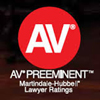 Martindale Hubbell - AV rated lawyer - Best Rating Possible
Martindale Hubbell - AV rated lawyer - Best Rating Possible
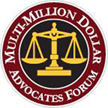 Multi-Million Dollar Advocates Forum
Multi-Million Dollar Advocates Forum
 AVVO Top Rated Personal Injury Attorney, 10 of 10
AVVO Top Rated Personal Injury Attorney, 10 of 10
 ATLA Top 100
ATLA Top 100
 Lawyers.com - Rated 5.0 out of 5.0 - Top Rating Possible
Lawyers.com - Rated 5.0 out of 5.0 - Top Rating Possible
 National Trial Lawyers - Top 100 Trial Lawyers
National Trial Lawyers - Top 100 Trial Lawyers
 Million Dollar Advocates Forum
Million Dollar Advocates Forum
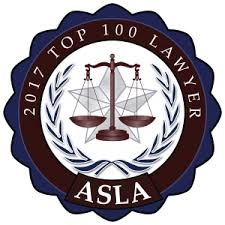 American Society of Legal Advocates - Top 100 - 2017
American Society of Legal Advocates - Top 100 - 2017
 Marquis' Who's Who in the World, Who's Who in America and Who's Who in American Law
Marquis' Who's Who in the World, Who's Who in America and Who's Who in American Law
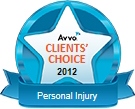 AVVO Clients' Choice Personal Injury Lawyer
AVVO Clients' Choice Personal Injury Lawyer
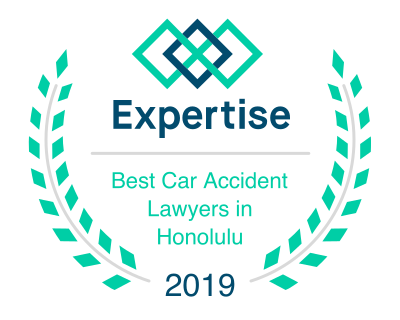 Expertise - Best Car Accident Lawyers in Honolulu 2019
Expertise - Best Car Accident Lawyers in Honolulu 2019
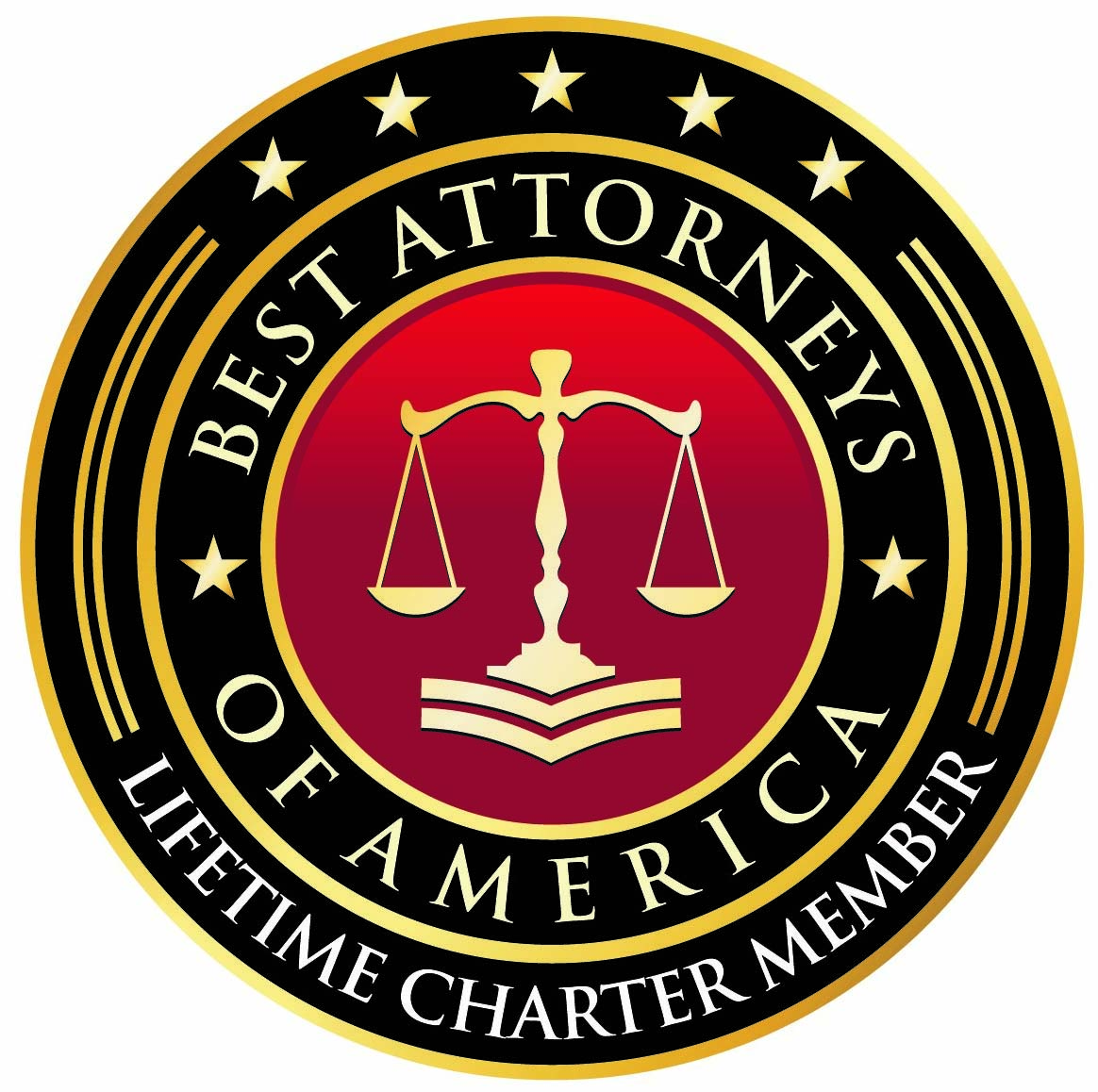 Best Attorneys in America - Life Charter Member
Best Attorneys in America - Life Charter Member
|
|
Click on a box below to choose one of our 4 menus:
There is NO CHARGE for sending your case information to our law firm. The information provided on this website is preliminary and informational ONLY. It is not legal advice. The use of our webpages does not establish an attorney-client relationship. This website is copyright 1999-2020 and the contents of this website are the property of Personal Injury Attorney William H Lawson. The Terms and Conditions of Use for this website and our Privacy Policy are available here for your consideration. All rights reserved. Hawaii Defective Products Liability Attorney LawyerWe thank you for visiting our site! |






